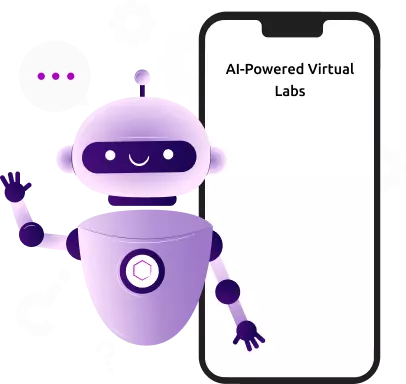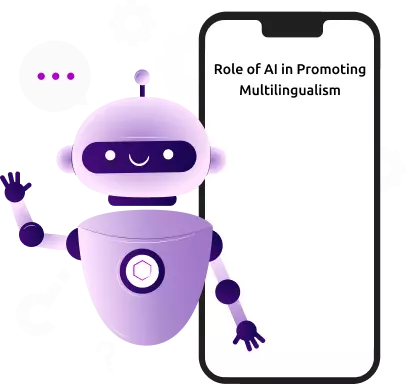- Our Writers
- How to Order
-
Services
Essays
Papers
- Why Us
- Resources
In the AI age, the boundaries between human creativity and machine output are becoming increasingly blurred.
Imagine this: you're scrolling through your social media feed, and you stumble upon a brilliant article that resonates with you. It engages you, tugs at your heartstrings, and even makes you smile.
Now, here's the twist—it was not crafted by a human hand but rather generated by an AI algorithm.
How do you feel about it now? Were the emotions the article evoked in you also artificial? Or were its effects real, regardless of who wrote it?
This blog attempts to explore how readers feel about AI-generated content. Are they disturbed by it? Do they embrace it completely? Or do they desire just a small and simple human touch in the content they consume?
Let’s explore these questions head-on!
“When a reader can’t instinctively tell whether it’s written by an AI or a human, that is good content.”
The first question that arises is whether readers can distinguish between content created by algorithms and that crafted by a human. This distinction isn't merely a philosophical curiosity. It has profound implications for how we perceive and engage with the content around us.
Readers love content that is useful, helpful, accurate, and written in the correct language and in a good style. But can Artificial Intelligence do all this?
Sometimes, yes.
For example, when listing and explaining the specifications of a particular gadget, AI can do as good a job as a trained technical writer.
In such cases, using AI to generate content makes no difference. AI can provide all the information a reader needs in the most organized way. Moreover, AI doesn’t generate content in a vacuum. Its output depends on the inputs and prompts provided by the users. Using good prompts can generate good output.
However, most types of content require qualities that AI alone can not provide. The lack of some important qualities makes AI-written content noticeable. Let’s discuss these qualities here.
AI has the capability to personalize content based on user data, making it appear tailored to individual preferences. This can make the content seem more appealing and engaging.
However, there's a fine line between personalization and stereotyping.
Readers may notice that AI-generated content sometimes serves predictable content based on preconceived notions and established patterns. This can lead to a sense of 'sameness' in the content, where it seems like every AI-generated output is a variation of the same theme.
One of the most significant distinctions readers might perceive is the level of emotional connection and authenticity in AI-generated content.
Human-created content often carries the unique experiences, perspectives, and vulnerabilities of the author, which can resonate deeply with readers. AI, on the other hand, may struggle to capture the complexities of human emotion and life experiences.
While algorithms can be programmed to evoke certain emotions, some readers may find it challenging to connect on an emotional level with content that lacks the genuine human touch.
Another aspect where the difference may become apparent is creativity and innovation.
While AI can generate content that appears creative and innovative on the surface, it typically relies on patterns and data from existing content. Human creativity, on the other hand, draws from a wide range of inspirations, emotions, and experiences, leading to truly novel and groundbreaking creations.
AI may be useful for aiding human creativity, but it can’t provide real innovation.
Trust is a cornerstone of effective communication and content consumption. When readers engage with any form of content, whether it's news articles, marketing materials, or creative works, they often consider the credibility and authenticity of the information.
In terms of AI-generated content, trust becomes a central issue that readers grapple with.
So can people trust content that is totally generated by AI?
One of the key factors that influence readers' perception of AI-generated content is the source from which it originates.
If the readers know that a piece of content is generated by an AI algorithm, they approach it with skepticism. They may raise questions about bias, accuracy, and the intentions behind the content.
However, the source isn't always transparent. Some AI-generated content may be presented without clear attribution or disclosure. This lack of transparency can lead to confusion and erode trust in the content.
AI algorithms learn from vast datasets, and the quality of the content they produce depends on the quality of the data they are trained on. Readers are increasingly aware of the potential for bias in AI-generated content. If the data used to train the AI contains biases, these biases can be reflected in the content it generates.
That’s why readers may question the accuracy and objectivity of AI-generated content, especially when it covers sensitive or controversial topics. They might wonder whether the content is influenced by a hidden agenda or if it genuinely seeks to inform and educate.
In short, there are good reasons to distrust AI-generated content. A healthy dose of skepticism can help readers make better sense of the content they consume.
As AI technology continues to advance and becomes more integrated into content creation, readers' perceptions of AI-generated content are evolving. People are becoming more accepting of AI as better models are developed and it consistently delivers high-quality, unbiased, and valuable content.
However, genuine concerns of the readers remain. Readers not only want accuracy and credibility, they also need a human touch, an emotional element, and soul of real creativity.
Although AI alone cannot provide these, there is a simple way to integrate AI into content creation while avoiding these issues: introducing human oversight.
Human engagement, proofreading, and editing of AI-generated content can be a great way to add human qualities into the content while taking a full advantage of AI algorithms. AI should be utilized as an enhancer, a helper, rather than a content manufacturing machine.
In summary, while AI-generated content can be impressively close to human-created content, there are often subtle differences that perceptive readers can pick up on.
These differences may involve the nuances of language, the authenticity of information, and the depth of creativity. However, adding the human element in AI content through editing, re-structuring, rewriting, and proofreading can solve most of the readers’ concerns.
Even with some concerns, AI content is getting better and more helpful. You can try using our AI essay writer to get excellent writing help for your writing projects. Just make sure to add your human creativity and you’ll be on your way to harness the power of AI efficiently.

WRITTEN BY
Dr. Alex Mercer (Mass Literature and Linguistics, Masters )
Dr. Alex Mercer is a renowned author specializing in AI and academic writing, known for his insightful and informative blogs on EssayService.ai. With a passion for both technology and education, Dr. Mercer has established himself as a trusted voice in the field, providing valuable insights to students, educators, and technology enthusiasts alike.
Dr. Alex Mercer is a renowned author specializing in AI and academic writing, known for his insightful and informative blogs on EssayService.ai. With a passion for both technology and education, Dr. Mercer has established himself as a trusted voice in the field, providing valuable insights to students, educators, and technology enthusiasts alike.
On This Page On This Page
Share this article
AI-Powered Virtual Labs: Revolutionizing Science Education

How AI-Powered Writing Tools are Transforming Academic Writing

AI Writing Assistants: A Writer Best Friend or Worst Enemy?

CopyAI vs. EssayService.ai

Jasper vs. EssayService.ai

Rytr vs. EssayService.ai

Smodin vs. EssayService.ai

Ethical Considerations in AI-Generated Content

Future Trends of AI in Academics

The Impact of Artificial Intelligence on Education: Current Trends and Future Possibilities

Improving Your Essay Writing with AI: Tips and Strategies

Natural Language Processing in Academic Writing: Tools and Techniques

The Psychology of AI-Generated Content: How Do Readers Perceive It?

The Role of AI in Promoting Multilingualism: Breaking Language Barriers in Writing
